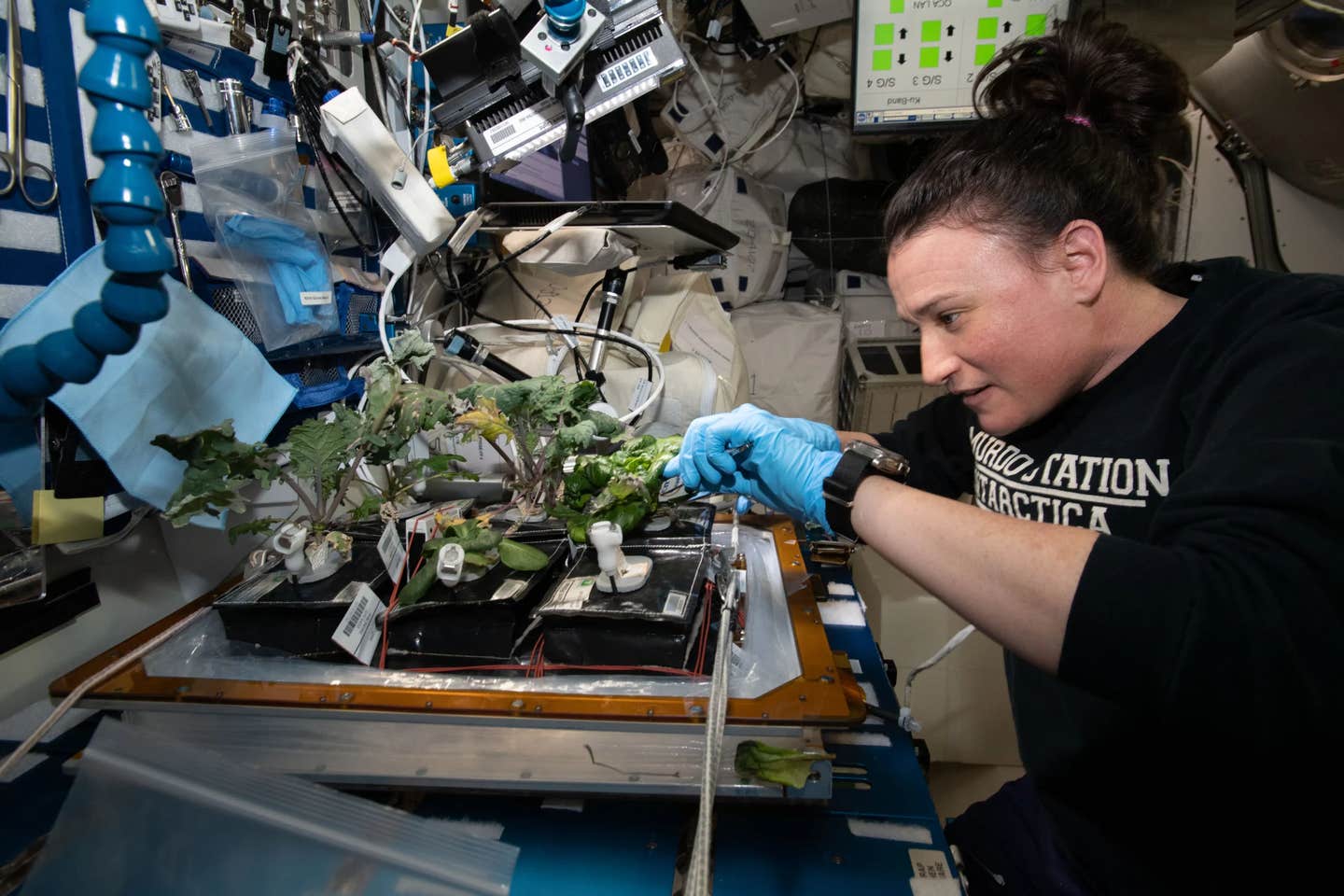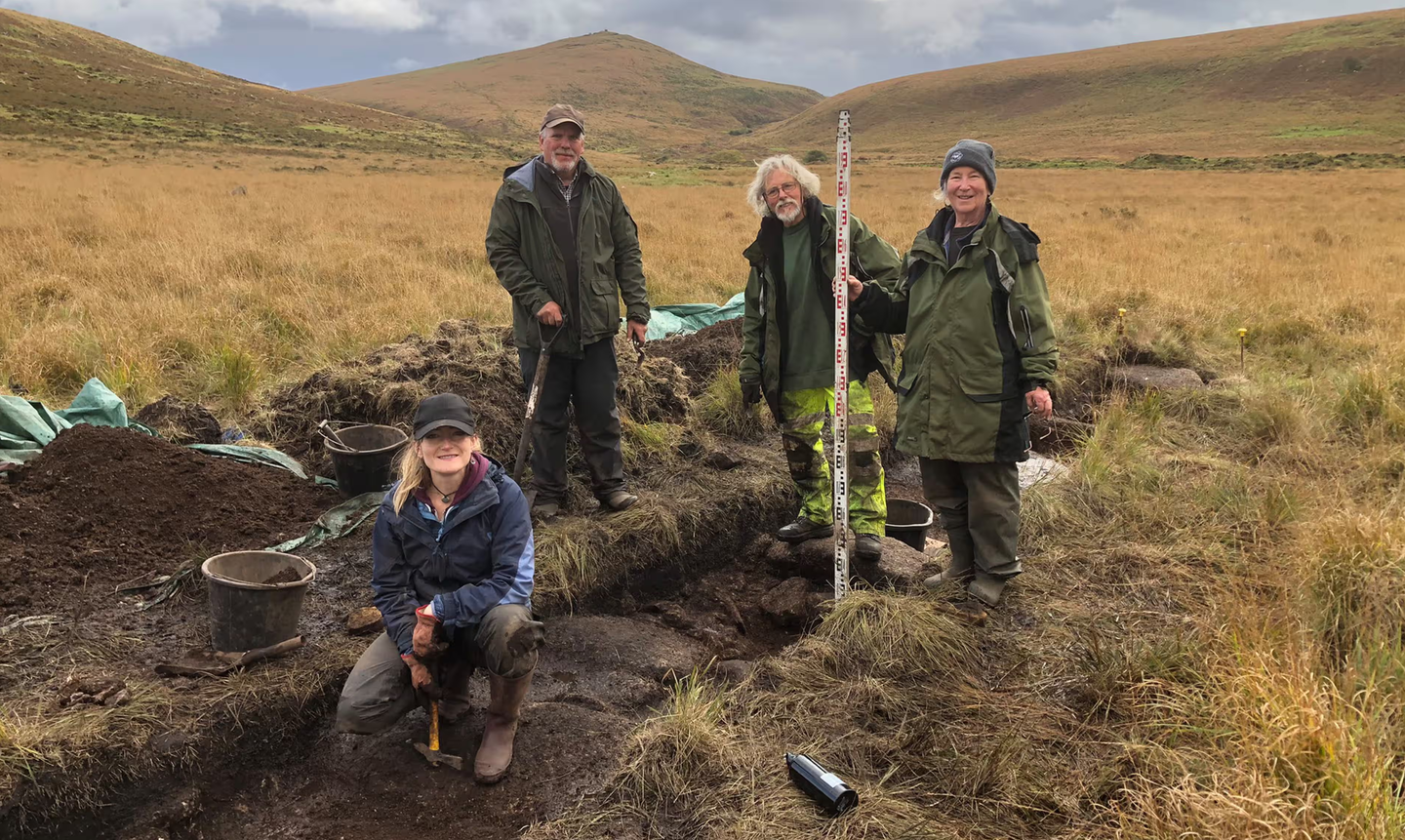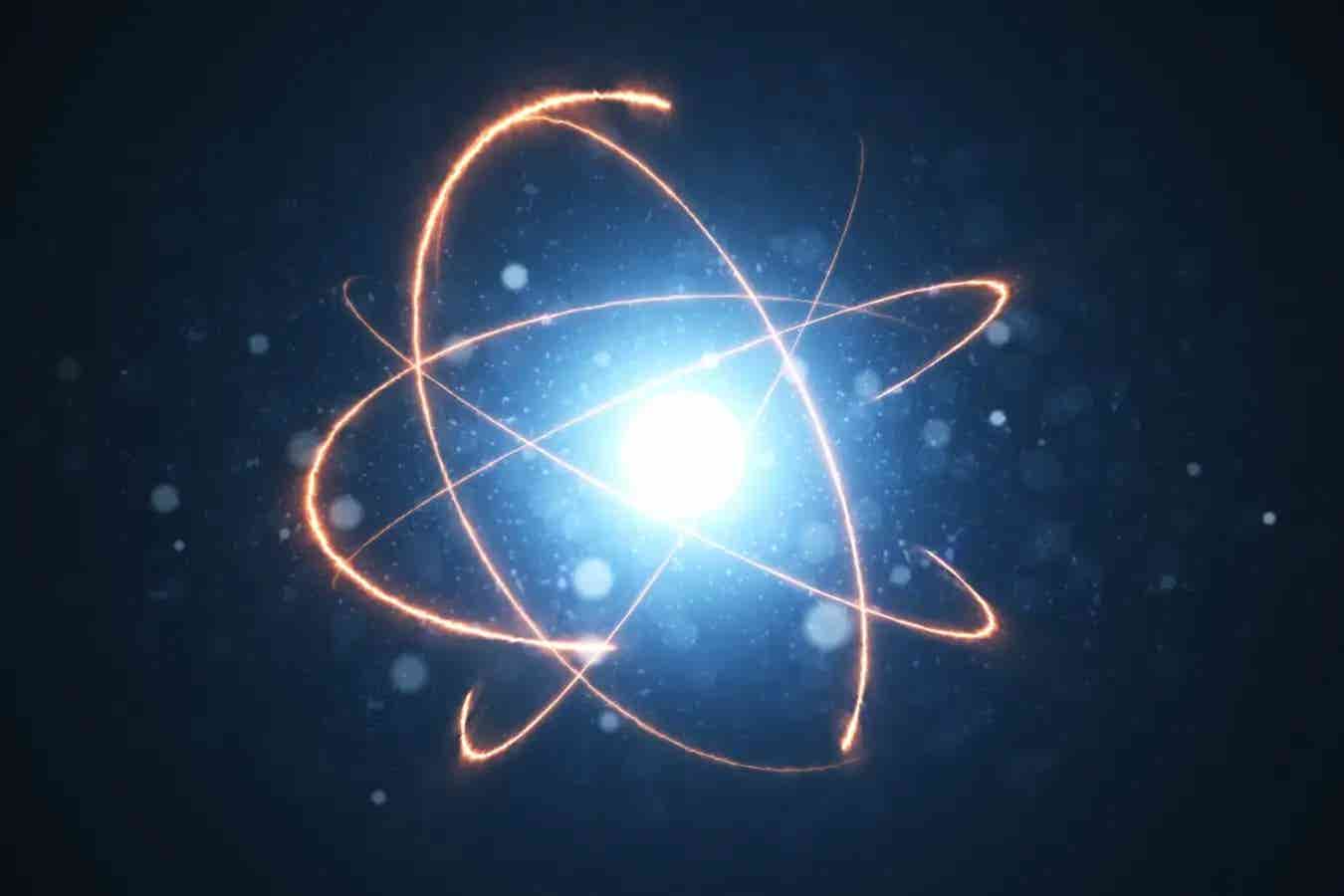NASA plans to grow nutritious plants on Mars
NASA’s research into growing food in space explores how crops like lettuce thrive in microgravity, ensuring astronaut health.

Astronaut Serena Auñón-Chancellor harvests red Russian kale and dragoon lettuce from Veggie on Nov. 28, 2018, just in time for Thanksgiving. The crew got to enjoy a mid-afternoon snack with balsamic vinegar, and Auñón-Chancellor reported the lettuce was “delicious!” (CREDIT: ESA/Alexander Gerst)
Space exploration presents extraordinary challenges, from ensuring astronaut health to providing reliable food sources.
As NASA advances its missions beyond Earth’s orbit, researchers like Dr. Gioia Massa are at the forefront of developing sustainable food systems for space. Massa’s work has contributed significantly to understanding how plants grow in microgravity, paving the way for fresh produce on long-duration spaceflights.
Massa’s journey began when, at 12 years old, she discovered her passion for space plant research during a visit to NASA’s Kennedy Space Center (KSC). Determined to join this field, she pursued internships, research opportunities, and a doctorate in plant biology from Penn State University.
Her involvement with NASA’s Postdoctoral Program (NPP) under the mentorship of Dr. Raymond Wheeler was pivotal. “I feel incredibly grateful that during this postdoctoral fellowship, I was able to help set the stage for astronauts to grow and eat crops on the International Space Station (ISS),” Massa reflected.
Her early work at KSC involved developing Veggie, a plant growth chamber designed for space. She tested plant varieties, designed rooting substrates, and established protocols for validating Veggie hardware. When the Veggie system launched to the ISS in 2014, it marked a breakthrough in space agriculture.
Veggie, roughly the size of a carry-on suitcase, uses LED lighting and plant “pillows” filled with clay-based growth media to provide water, nutrients, and air. This innovative system has since supported the growth of lettuce, mustard greens, kale, and even zinnias in space.
Beyond Veggie, Massa’s contributions include her leadership on projects like Plant Habitat-07, which examines how moisture levels affect plant health and microbiomes.
This research uses the Advanced Plant Habitat (APH) on the ISS, an enclosed and automated growth chamber equipped with over 180 sensors and LED lights. The study focuses on Outredgeous red romaine lettuce grown under four moisture scenarios: ideal water, drought, flood, and fluctuating conditions.
Related Stories
During each 28-day growth cycle, lettuce plants are monitored, harvested, and analyzed. The results could inform strategies for growing safe, nutritious crops in space.
For example, preliminary findings suggest that microgravity, elevated CO2, and other environmental factors influence plant microbiomes and nutrient profiles. This data is invaluable for future missions, where astronauts will rely on in-situ food production to maintain health.
Fresh produce is more than a source of nutrition for astronauts. It addresses psychological needs, reduces menu fatigue, and provides essential vitamins, such as Vitamin C, which degrade in prepackaged space diets over time. Growing crops like lettuce, tomatoes, and peppers offers a promising solution.
NASA’s research also emphasizes the importance of balancing lighting and environmental factors to maximize yield and minimize microbial risks. For instance, blue light wavelengths enhance secondary metabolites, while controlled environments mitigate pathogen growth.
Insights from space agriculture research have Earth applications as well. Understanding how plants respond to stressors like drought or overwatering could improve crop resilience and productivity in challenging climates. This dual benefit underscores the value of space-based plant studies for addressing global food security.
NASA’s investments in plant research have already demonstrated the feasibility of growing crops in space. However, challenges remain, such as understanding genetic changes in plants under microgravity.
Studies using Arabidopsis thaliana, a model organism in plant biology, are shedding light on how space affects genes, proteins, and metabolites.
Dr. Norman Lewis, a leading researcher in this field, is particularly interested in lignin, a compound that provides structural support in plants. Insights from these studies could lead to bioengineered plants better suited for space and more efficient nutrient absorption.
Researchers are also investigating plant immune systems in space. For example, when zinnias in Veggie suffered a fungal outbreak, it raised questions about whether microgravity weakens plant defenses.
Future experiments, such as using the Biological Research in Canisters (BRIC-LED) system, aim to test plants’ responses to simulated threats. These findings will be critical for ensuring the health of crops on long-duration missions.
As Massa notes, mentorship and collaboration have been central to the success of NASA’s plant research. “I hope that I can help to provide the same support to other young scientists that I was so fortunate to receive,” she said. Her dedication has inspired a new generation of researchers working to make space agriculture a reality.
The implications of these efforts extend beyond space. Advanced plant growth systems like Veggie and APH offer innovative solutions for sustainable agriculture on Earth.
By studying how plants adapt to extreme environments, scientists are uncovering strategies to improve crop resilience and food security in the face of climate change.
The journey to grow food in space is not just about reaching new frontiers; it’s about ensuring a thriving future for humanity, both on Earth and beyond.
Note: Materials provided above by The Brighter Side of News. Content may be edited for style and length.
Like these kind of feel good stories? Get The Brighter Side of News' newsletter.
Joseph Shavit
Head Science News Writer | Communicating Innovation & Discovery
Based in Los Angeles, Joseph Shavit is an accomplished science journalist, head science news writer and co-founder at The Brighter Side of News, where he translates cutting-edge discoveries into compelling stories for a broad audience. With a strong background spanning science, business, product management, media leadership, and entrepreneurship, Joseph brings a unique perspective to science communication. His expertise allows him to uncover the intersection of technological advancements and market potential, shedding light on how groundbreaking research evolves into transformative products and industries.



